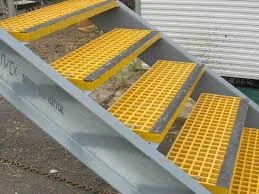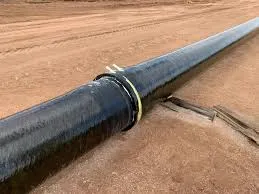
-
 Afrikaans
Afrikaans -
 Albanian
Albanian -
 Amharic
Amharic -
 Arabic
Arabic -
 Armenian
Armenian -
 Azerbaijani
Azerbaijani -
 Basque
Basque -
 Belarusian
Belarusian -
 Bengali
Bengali -
 Bosnian
Bosnian -
 Bulgarian
Bulgarian -
 Catalan
Catalan -
 Cebuano
Cebuano -
 China
China -
 China (Taiwan)
China (Taiwan) -
 Corsican
Corsican -
 Croatian
Croatian -
 Czech
Czech -
 Danish
Danish -
 Dutch
Dutch -
 English
English -
 Esperanto
Esperanto -
 Estonian
Estonian -
 Finnish
Finnish -
 French
French -
 Frisian
Frisian -
 Galician
Galician -
 Georgian
Georgian -
 German
German -
 Greek
Greek -
 Gujarati
Gujarati -
 Haitian Creole
Haitian Creole -
 hausa
hausa -
 hawaiian
hawaiian -
 Hebrew
Hebrew -
 Hindi
Hindi -
 Miao
Miao -
 Hungarian
Hungarian -
 Icelandic
Icelandic -
 igbo
igbo -
 Indonesian
Indonesian -
 irish
irish -
 Italian
Italian -
 Japanese
Japanese -
 Javanese
Javanese -
 Kannada
Kannada -
 kazakh
kazakh -
 Khmer
Khmer -
 Rwandese
Rwandese -
 Korean
Korean -
 Kurdish
Kurdish -
 Kyrgyz
Kyrgyz -
 Lao
Lao -
 Latin
Latin -
 Latvian
Latvian -
 Lithuanian
Lithuanian -
 Luxembourgish
Luxembourgish -
 Macedonian
Macedonian -
 Malgashi
Malgashi -
 Malay
Malay -
 Malayalam
Malayalam -
 Maltese
Maltese -
 Maori
Maori -
 Marathi
Marathi -
 Mongolian
Mongolian -
 Myanmar
Myanmar -
 Nepali
Nepali -
 Norwegian
Norwegian -
 Norwegian
Norwegian -
 Occitan
Occitan -
 Pashto
Pashto -
 Persian
Persian -
 Polish
Polish -
 Portuguese
Portuguese -
 Punjabi
Punjabi -
 Romanian
Romanian -
 Russian
Russian -
 Samoan
Samoan -
 Scottish Gaelic
Scottish Gaelic -
 Serbian
Serbian -
 Sesotho
Sesotho -
 Shona
Shona -
 Sindhi
Sindhi -
 Sinhala
Sinhala -
 Slovak
Slovak -
 Slovenian
Slovenian -
 Somali
Somali -
 Spanish
Spanish -
 Sundanese
Sundanese -
 Swahili
Swahili -
 Swedish
Swedish -
 Tagalog
Tagalog -
 Tajik
Tajik -
 Tamil
Tamil -
 Tatar
Tatar -
 Telugu
Telugu -
 Thai
Thai -
 Turkish
Turkish -
 Turkmen
Turkmen -
 Ukrainian
Ukrainian -
 Urdu
Urdu -
 Uighur
Uighur -
 Uzbek
Uzbek -
 Vietnamese
Vietnamese -
 Welsh
Welsh -
 Bantu
Bantu -
 Yiddish
Yiddish -
 Yoruba
Yoruba -
 Zulu
Zulu
Jan . 14, 2025 12:20
Back to list
grp handrail
In the rapidly evolving architecture and construction industries, GRP handrails have emerged as a cutting-edge solution that addresses both safety and aesthetic concerns. Glass Reinforced Plastic (GRP), also known as fiberglass, presents a formidable combination of strength, durability, and adaptability, making it a preferable choice for various applications. This article provides an expert insight into why GRP handrails are becoming the go-to material for architects, engineers, and construction professionals, backed by experience, professionalism, authority, and reliability.
Design flexibility is another remarkable aspect where GRP handrails excel. With the ability to be molded into various shapes and finishes, they offer architects and designers the freedom to bring their creative visions to life without the constraints posed by more rigid materials. Whether aiming for a sleek modern look or a classic design, GRP handrails can be customized to meet specific architectural requirements. This versatility signifies the deep expertise and innovative potential embedded in GRP technology. From an environmental perspective, GRP handrails are a sustainable choice. The production of GRP consumes less energy compared to metals, and the material itself is long-lasting, reducing the frequency of replacement and waste. Environmentally conscious builders appreciate this greener aspect, aligning their projects with sustainable practices. This not only highlights the environmental responsibility but also the authoritative stance of GRP as a future-forward material choice. In conclusion, GRP handrails embody an ideal blend of durability, flexibility, and safety — qualities that are crucial in today’s demanding construction needs. Their immunity to corrosion, ease of installation, safety features, design adaptability, and sustainability are not mere selling points but are validated by the extensive use and endorsement from industry professionals. As the demand for innovative and reliable architectural solutions continues to rise, GRP handrails stand out as a material that not only meets but exceeds the expectations grounded in experience, expertise, authority, and trustworthiness. For those charting the future of modern architectural design, incorporating GRP handrails is not just an option but a strategic necessity.


Design flexibility is another remarkable aspect where GRP handrails excel. With the ability to be molded into various shapes and finishes, they offer architects and designers the freedom to bring their creative visions to life without the constraints posed by more rigid materials. Whether aiming for a sleek modern look or a classic design, GRP handrails can be customized to meet specific architectural requirements. This versatility signifies the deep expertise and innovative potential embedded in GRP technology. From an environmental perspective, GRP handrails are a sustainable choice. The production of GRP consumes less energy compared to metals, and the material itself is long-lasting, reducing the frequency of replacement and waste. Environmentally conscious builders appreciate this greener aspect, aligning their projects with sustainable practices. This not only highlights the environmental responsibility but also the authoritative stance of GRP as a future-forward material choice. In conclusion, GRP handrails embody an ideal blend of durability, flexibility, and safety — qualities that are crucial in today’s demanding construction needs. Their immunity to corrosion, ease of installation, safety features, design adaptability, and sustainability are not mere selling points but are validated by the extensive use and endorsement from industry professionals. As the demand for innovative and reliable architectural solutions continues to rise, GRP handrails stand out as a material that not only meets but exceeds the expectations grounded in experience, expertise, authority, and trustworthiness. For those charting the future of modern architectural design, incorporating GRP handrails is not just an option but a strategic necessity.
Next:
Related Products









